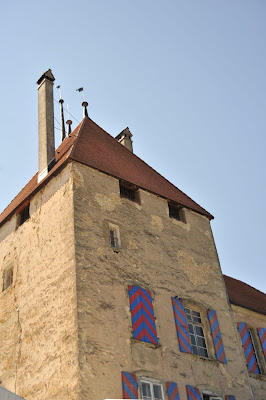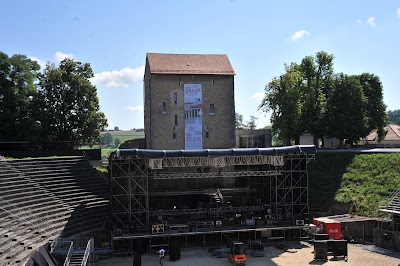Le Château d'Avenches



Avenches is located on a hill, isolated in the Broye valley, 12 km north-west of Fribourg. The village Donatyre (505 m), south of Avenches, belongs to the municipality of Avenches, partly until 2006, and entirely since the municipality of Donatyre merged with Avenches.

The church of Marie-Madeleine


L'Eglise Marie-Madeleine was built at the end of the 11th century.
Avenches is built on the site of the Roman town Aventicum, which was the most important in Switzerland.




Views of the chateau d'Avenches
The roots of Avenches go back to the Celts. A tribe of Helvetians had built a settlement on the hills of Bois de Châtel, south of the later Roman settlement.
The establishment of the Roman settlement of Aventicum, which became the capital of the province, took place around 15-13 B.C. The name comes from the Helvetian spring goddess Aventia. Aventicum soon developed into a blooming commercial center with 20000 inhabitants. The area was plundered by the Alamanni tribe after the fall of Rome in the third century. A new walled settlement was built in the fifth century. Throughout this period, the town remained the seat of a bishopric and had at least two churches (Saint-Martin and Saint-Symphorian). When the bishop moved his seat to Lausanne in the sixth century, the decline of the city began.




Modern views of the ampitheather and the wall
The medieval castle, which is much less well known than the actual castle, could find its origins in the noble house owned by Mayor Peter Avenches. In 1481 a large square tower was added to the castle. It is certainly one that still exists in the northeast .
In 1536, the building suffered damages andduring the sixteenth century it underwent fundamental changes: reconstruction of a gateway to 1550, then expansion of the main building.






In 1074, the Bishop of Lausanne, Burkhard von Oltigen founded a new city on the site and named it Adventica, which became Avenche in 1518. In the 11th century, it was surrounded by a wall, and it received city rights in 1259.
A German name for the town did not appear until the 13th century, and it is neither a translation of the Latin, nor a Germanized form of the French. In 1266 the form Wibilsburg appears, and then Wipelspurg (1302), Wibelspurg (1458), Wiblispurg (1476), Wiflispurg (1548), and Wiflisburg (1577). This is derived from the personal name Wibili.
The town made a treaty in 1239 with Fribourg and one in 1353 with Murten.



Roman theatre in Avenches.With the Bernese conquest of Vaud in 1536, Avenches came under Bernese domination. In 1798, it became part of the Helvetic canton of Fribourg. In 1801, the population pushed for incorporation into the canton of Léman in the Helvetic Republic. With the mediation of Napoleon in 1803, Avenches became part of the canton of Vaud and capital of its district.
The Cigognier
The column called " The Cigognier " because of a stork nest, appeared for the first time in 1642 on an engraving by the artist M. Merian the Elder. This nest was removed during the restoration in 1978.





The Temple of the Imperial Cult
The Roman Thermal Bath Ruins




No comments:
Post a Comment